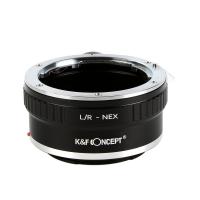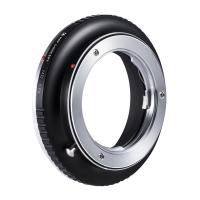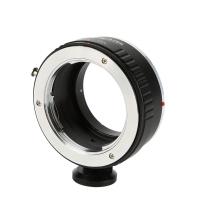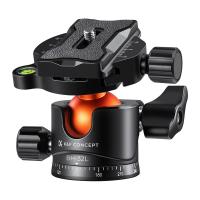What Is A Confocal Microscope ?
A confocal microscope is an advanced imaging tool used in scientific research and medical diagnostics. It uses a laser beam to illuminate a sample and a pinhole aperture to eliminate out-of-focus light, resulting in high-resolution, three-dimensional images. This technique allows researchers to visualize and study the internal structures of cells and tissues with exceptional clarity and detail. Confocal microscopy is widely used in various fields, including biology, medicine, materials science, and neuroscience, to investigate the structure and function of biological samples at the cellular and subcellular levels.
1、 Principle of confocal microscopy
A confocal microscope is an advanced imaging tool used in scientific research and medical diagnostics. It provides high-resolution, three-dimensional images of biological samples by using a laser beam to scan the specimen point by point. The principle of confocal microscopy is based on the concept of eliminating out-of-focus light, resulting in improved image quality and enhanced optical sectioning.
In confocal microscopy, a pinhole is placed in front of the detector, allowing only the light emitted from the focal plane to pass through. This eliminates the out-of-focus light, which would otherwise blur the image. By scanning the laser beam across the sample and detecting the emitted light, a series of optical sections are obtained. These sections can be reconstructed to create a three-dimensional image of the specimen.
Confocal microscopy offers several advantages over traditional microscopy techniques. It provides better resolution and contrast, allowing researchers to visualize fine details within the sample. Additionally, confocal microscopy enables the study of thick specimens, as it can selectively image specific planes within the sample. This technique has been widely used in various fields, including cell biology, neuroscience, and pathology.
The latest advancements in confocal microscopy include the development of super-resolution techniques, such as stimulated emission depletion (STED) microscopy and structured illumination microscopy (SIM). These techniques further enhance the resolution of confocal microscopy, allowing researchers to visualize structures at the nanoscale level. Additionally, confocal microscopy has been combined with other imaging modalities, such as fluorescence lifetime imaging microscopy (FLIM) and fluorescence correlation spectroscopy (FCS), to provide more comprehensive information about the sample.
Overall, confocal microscopy is a powerful tool that has revolutionized the field of microscopy, enabling researchers to explore the intricate details of biological samples with unprecedented clarity and precision.

2、 Components of a confocal microscope
A confocal microscope is an advanced imaging tool used in scientific research and medical diagnostics. It is designed to provide high-resolution, three-dimensional images of biological samples with exceptional clarity and detail.
The key principle behind a confocal microscope is the use of a pinhole aperture to eliminate out-of-focus light, resulting in improved image quality and increased optical sectioning. This technique, known as optical sectioning, allows researchers to visualize specific structures within a sample at different depths, providing a clearer understanding of its internal organization.
The components of a confocal microscope include a light source, typically a laser, which emits a focused beam of light onto the sample. The light is then reflected or emitted by the sample and collected by a detector. A pinhole aperture is placed in front of the detector to block out-of-focus light, allowing only the light from the focal plane to pass through. This creates a sharp, high-resolution image of the sample.
In addition to the basic components, confocal microscopes often include advanced features such as multiple laser lines for fluorescence imaging, motorized stages for automated scanning, and software for image analysis and reconstruction. These advancements have greatly enhanced the capabilities of confocal microscopy, enabling researchers to study dynamic processes in living cells and tissues in real-time.
The latest point of view in confocal microscopy is the integration of other imaging modalities, such as fluorescence lifetime imaging (FLIM) and super-resolution techniques like stimulated emission depletion (STED) microscopy. These advancements further improve the resolution and sensitivity of confocal microscopy, allowing researchers to explore the intricate details of biological samples at the molecular level.
Overall, a confocal microscope is a powerful tool that has revolutionized the field of microscopy, enabling researchers to visualize and study biological samples with unprecedented precision and depth.

3、 Advantages of confocal microscopy
A confocal microscope is an advanced imaging tool used in scientific research and medical diagnostics. It utilizes a laser beam to scan a sample point by point, creating high-resolution, three-dimensional images. This technique allows researchers to visualize the internal structures of cells and tissues with exceptional clarity and precision.
The advantages of confocal microscopy are numerous. Firstly, it provides optical sectioning, which means that only the in-focus plane is captured while the out-of-focus light is rejected. This eliminates the need for physical sectioning of samples, reducing the time and effort required for sample preparation. Additionally, confocal microscopy enables the visualization of thick specimens, as it can capture images at different depths within the sample.
Another advantage is the ability to obtain high-resolution images. The laser scanning technique allows for the detection of fluorescent signals with great sensitivity, resulting in sharp and detailed images. This is particularly useful in studying cellular processes and interactions at the molecular level.
Confocal microscopy also offers the possibility of live-cell imaging. By using specialized incubation chambers, researchers can observe dynamic processes in real-time, providing valuable insights into cellular behavior and function. This has revolutionized fields such as developmental biology and neuroscience.
Furthermore, confocal microscopy has been combined with other techniques to enhance its capabilities. For example, the integration of fluorescence resonance energy transfer (FRET) allows the measurement of molecular interactions within cells. Additionally, the combination of confocal microscopy with super-resolution techniques, such as stimulated emission depletion (STED) microscopy, has further pushed the boundaries of resolution, enabling the visualization of structures at the nanoscale.
In recent years, confocal microscopy has also benefited from advancements in imaging software and hardware. Improved detectors, faster scanning speeds, and better image processing algorithms have further enhanced the quality and speed of image acquisition.
Overall, the advantages of confocal microscopy make it an indispensable tool in various scientific disciplines, enabling researchers to explore the intricate details of biological systems and unravel the mysteries of life.

4、 Applications of confocal microscopy
A confocal microscope is an advanced imaging tool that uses a laser beam to scan a sample and create high-resolution, three-dimensional images. It is designed to eliminate out-of-focus light, resulting in sharper and more detailed images compared to conventional microscopes. This is achieved by using a pinhole aperture to block the light that is not in focus, allowing only the light from the focal plane to pass through.
Confocal microscopy has a wide range of applications in various scientific fields. In biology, it is commonly used for studying cellular structures and processes. It enables researchers to visualize the internal structures of cells, such as the nucleus, mitochondria, and cytoskeleton, with exceptional clarity. Confocal microscopy is also valuable in neuroscience, allowing scientists to study the intricate connections between neurons and investigate brain function.
In addition to biological applications, confocal microscopy has found use in materials science, where it can provide detailed information about the surface topography and composition of materials. It is also employed in the field of medicine for diagnostic purposes, such as examining tissue samples for abnormalities or studying the progression of diseases.
The latest advancements in confocal microscopy include the development of super-resolution techniques, such as stimulated emission depletion (STED) microscopy and structured illumination microscopy (SIM). These techniques push the limits of resolution beyond the diffraction limit, allowing researchers to visualize structures at the nanoscale level. Furthermore, confocal microscopy is now being combined with other imaging modalities, such as fluorescence lifetime imaging microscopy (FLIM) and fluorescence correlation spectroscopy (FCS), to provide more comprehensive and quantitative information about biological samples.
Overall, confocal microscopy continues to be a powerful tool in scientific research, enabling scientists to explore the microscopic world with unprecedented detail and depth.






























There are no comments for this blog.